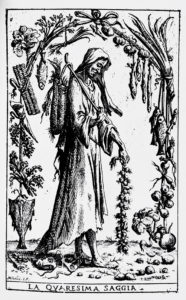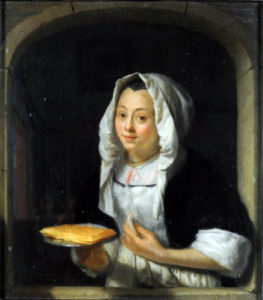March 29, 2022: Due to a glitch in the software that delivers news of newly-posted chapters of this blog to subscribers, subscribers received notification of this post and the previous post just today. Please note that when I speak about “this Friday” in the post below, I was talking about a Friday that has already passed: The Vintage Roots Market was last Friday and Saturday, March 25 and 26. But we do hope to see you at our next pop-up market! It’s the Taco Fiesta at Bryant Park here in Lake Worth on the Lake Worth Lagoon: Saturday April 9 from 3 to 10 PM. Thank you, John
If you love waffles, we’ve got a day just for you coming up this Friday, which is also going to be the first day of our next pop-up market, the 2-day Vintage Roots Market at beautiful Yesteryear Village at the South Florida Fairgrounds in suburban West Palm Beach. We’ll be there Saturday, as well, with all of our artisan goods from Germany, Sweden, Poland, and Ukraine for Easter and Springtime and Midsummer. And then Sunday brings us a day off and also it brings Midlent: Laetare Sunday and Mothering Sunday. Let’s touch on all these topics today, but how about we begin with the waffles?
Friday is Lady Day: the 25th of March is the Feast of the Annunciation, which marks the visitation of the archangel Gabriel to Mary. Gabriel came to deliver the startling news to Mary that she was to bear a child, a son, and that that child would be the light of the world, the son of God. It is nine months to the nativity, nine months to Christmas. A bit of linguistic confusion in Sweden has made this a day to enjoy waffles, and we, of course, heartily endorse this culinary tradition. Let’s attempt an easy explanation for this phenomenon: The name Lady Day comes out of the tradition of calling Mary “Our Lady” (as in Our Lady of Lourdes, Our Lady of Fatima, Our Lady of Guadalupe, etc). In Sweden, the day is called Vårfrudagen, which follows the same logic, translating essentially to “Our Lady Day.”
But here’s where it gets interesting: Vårfrudagen, in some Swedish dialects, is awfully close in both spelling and pronunciation to Våffeldagen. And while the former translates to “Our Lady Day,” the latter translates to “Waffle Day.” It is this bit of linguistic confusion that has had Swedes, for centuries now, eating waffles on the Feast of the Annunciation. It’s a tradition that has spilled over to wherever Swedes have left their mark, this annual excuse to eat waffles at any time of day on Vårfrudagen––breakfast, lunch, or dinner. We will be joining their ranks today, and we encourage you to do the same. And while we here in the States are partial to butter and maple syrup atop our waffles, the waffles in Sweden today are typically served with whipped cream and lingonberries or cloudberries. There are also savory waffle dishes, and one of our favorites: waffles with ice cream. If you partake on Friday, and I think you should, we encourage you to enjoy yours as you wish. We make no judgements.
The Feast of the Annunciation is, of course, a feast of the Church, as is Laetare Sunday, which follows later this weekend. Laetare Sunday marks the midpoint of our Lenten journey, and as such, the mood is lightened a bit, away from the somber nature of these 40 days and towards a bit of joy. Rose replaces purple for the day. In the UK, it is Mother’s Day, better known there as Mothering Sunday. This was in years past the day for simnel cakes, and most especially, to bring a simnel cake to your mum. Nowadays, the simnel cake has become more of an Easter tradition, but you know us: we like to honor the old ways. So if you find yourself thinking of simnel cake this weekend, now you know why. Whether you make it for Midlent or for Easter, you’ll find many recipes for simnel cake online, including this recipe from the BBC.
But now, let’s get to the Vintage Roots Market: I’m so excited to see folks again! We’ve not been out for a pop-up market since last December’s Christkindlmarkt, and this next market is going to be at one of my favorite places around here: Yesteryear Village. Aside from the technology and the 2022 prices, your visit will be a proper step back in time. Yesteryear Village is a small village made up of some of the county’s oldest buildings, brought together in one place –– kind of like Old Sturbridge Village, but Florida style. Amongst the permanent buildings there you’ll find some old Lake Worth cottages from the early 20th century, an old Florida homestead from the 19th century, a small farm, a church, a printshop, a fire station, a pineapple packing shop, an old schoolhouse, some railroad history, perhaps a penny farthing or two, and so much more. And then this Friday and Saturday you’ll also find there the Vintage Roots Market, which will include Convivio Bookworks in our outdoor tent. We’ll have with us our complete selection of springtime and Easter artisan goods: handmade wooden bunnies from Germany, as well as German baskets and natural Easter grass, Swedish candles, and perhaps most special this year, handmade pysanky eggs from Ukraine. We get them from our friend Kyrylo, who lives in Lviv, in the western part of the country, who in turn supports the artisans who make these traditional Ukrainian crafts. Most of them are women, and most live in remote villages of the Carpathian Mountains (hopefully far from the worst parts of the war being waged there now). This Easter, we are donating all of our profits from these Ukrainian pysanky eggs back to Kyrylo, who, aside from his business in Ukrainian traditional crafts, also has a pizzeria. He’s been making pizza every day to donate to the many refugee camps in Lviv –– people who have left their homes in the more heavily bombarded north, south, and east of Ukraine and headed west to Lviv, which is near the Polish border. Kyrylo’s city typically has 800,000 residents, he tells us. When last we heard from him, last week, he said there were now about 1.5 million in Lviv. Our hearts go out to all the people of Ukraine and we wish them peace and an end to this aggression.
If you can’t join us in person, you’re invited to shop with us online, and if you do, we’re offering a special online/mail order deal right now: it’s our Springtime Stock-Up Sale. Use discount code BUNNY for $10 off your order of $75, plus we’ll ship your domestic order for free. That’s a total savings of nearly $20. We’ve brought in so many lovely springtime goods this year, you really have to see it to appreciate it. Plus lots of brand new tea towels, too! Both the handprinted ones from Kei & Molly Designs in New Mexico, and the embroidered towels by my mom, Millie, who can’t seem to stop embroidering but who also likes to remind me that I’ve got to help her move some inventory! It took me several weeks, but I finally did get all her new hand embroidered tea towels on the website this past weekend. Millie says, “Don’t treasure them, use them.” She’s right. I love using Mom’s towels in the kitchen. If you really want to keep some to treasure, that’s just fine… but buy a few extra to use. These towels are made for that purpose, so please put them to work! Click here to shop!
Image: “Young Woman with a Waffle” by Godfried Schalcken. Oil on canvas, circa 1694 [Public domain, via Wikimedia Commons].






